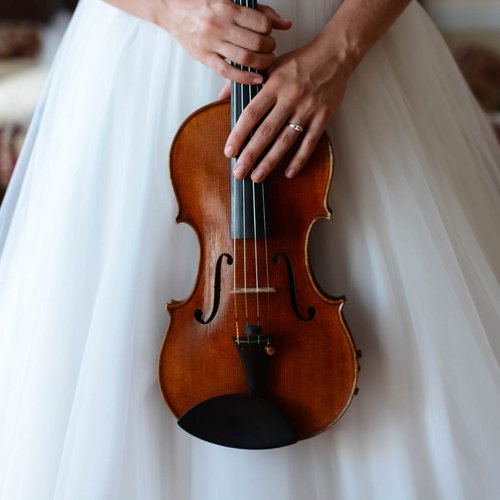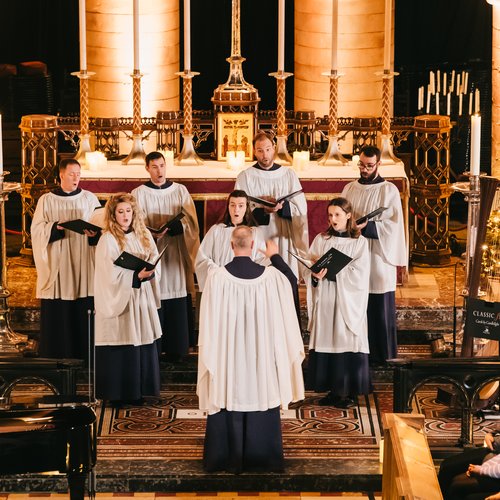Meet the sword-fighting opera singer who burnt down a convent to rescue her gay lover
12 June 2025, 15:12

The real-life story of queer love and operatic passion from the 17th-century icon, Julie D’Aubigny.
Listen to this article
At the end of the 17th century, a convent in Avignon in Southern France was razed to the ground.
The fire was the result of arson laid by a soon-to-be opera singer named Julie D’Aubigny, the daughter of a trusted secretary at the King’s court, who was at the convent in pursuit of her lover. A woman.
The two fled together and, after a period of hiding, D’Aubigny went on to have a notable career at the Paris Opera, where roles were created for her and she entered the history books as one of the 17th century’s great opera stars, with potentially the juiciest personal life we’ve come across.
Join us for the swashbuckling tale of the colourful life, lustrous loves and rich operatic career of Julie D’Aubigny.
Read more: 20 brilliant LGBTQ+ opera stars you should know
Who was Julie D’Aubigny?
Julie D’Aubigny was a 17th-century opera singer. She is believed to have been born in 1673, the daughter of a trusted secretary at the court of the King of France, who also had sons.
Her father’s post saw him working for the Master of the Horse for King Louis XIV, Louis de Lorraine-Guise. D’Aubigny was in a trusted position, active in supporting Lorraine-Guise’s militaristic role and training court pages, alongside other duties, which presented him with the right circumstances to teach his daughter a rigorous course of academic studies – more typically bestowed on boys in those days – as well as the art of fencing.
Julie D’Aubigny emerged well-educated, and a master swordswoman.

Julie D’Aubigny the sword fighter
It is recorded that she could compete in fencing perfectly well against grown men from as young as 12, and history has her recorded as travelling around the region to demonstrate her sword skills, alongside her brothers.
D’Aubigny apparently dressed in male attire when fencing, and her skill was so great that people didn’t believe she was a woman. During one duel, she took her shirt off to prove it.
The loves of Julie D’Aubigny
In 1687, when she was just 14, she appears to have started a relationship with her father’s employer, Louis de Lorraine-Guise.
Around the same time, she’s also recorded as having an affair with a fellow fencer, a man called Séranne.
This was after she had married Sieur de Maupin of Saint-Germain-en-Laye, which made her Madame de Maupin, or “La Maupin”.
They lived apart when Sieur de Maupin was posted for work, and she travelled around the country with Séranne giving more fencing demos, often dressed as a man.
D’Aubigny is also charged in history as beginning a romantic relationship with a young woman (not the first same sex love affair she would have) not a long time after this. The woman’s parents discovered the romance and sent their daughter to a convent to separate the lovers.
Read more: Hildegard of Bingen: life and music of the great female composer
Why did Julie D’Aubigny burn down a convent?
D’Aubigny followed her lover, and managed to join the convent. The two women, the story goes, stole the body of a nun who had recently passed away, placed it in the bed of her lover, and set the room on fire before escaping.
They fled for three months before the girl returned home. Love, sometimes, isn’t enough to sustain a relationship under pressure.
D’Aubigny, charged as a man (because how could a woman commit such crimes?), was sentenced to death in absentia.
She wasn’t caught. Continuing her travels in male disguise, she made her way to Paris, earning money by singing, something her fine education had given her the ability to do, and working in bars.
Julie D’Aubigny the opera singer
She happened upon a singing teacher named Maréchal, and also met an opera singer, Gabriel-Vincent Thévenard, who between their mentoring and dreams, encouraged her to take her singing to Paris.
Thévenard was soon engaged by Paris Opera, and this encouraged D’Aubigny to apply. She was accepted in 1690 and would perform as Mademoiselle de Maupin, the “Mademoiselle” a tradition for women in opera despite their marital status.
D’Aubigny debuted at Paris Opera as Pallas Athena in Lully’s Cadmus et Hermione, and performed regularly for over fifteen years, receiving many admirers and admiring words. She sung soprano roles and contralto roles.
She was portrayed by the writer Théophile Gautier in the novel, Mademoiselle de Maupin, which, based on her real life with embellishments, has no doubt flamed the intrigue around her life. What is for certain is that she was embroiled in these key events that would set anyone apart as having an extraordinary life.
And her documented relationships with both men, and women, the impact of which are perhaps deepened by the stories of her years dressed in men’s clothing, make her undoubtedly queer at a time when being gay was most often hidden in the shadows.
Read more: Who was Maria Callas, and what made her the world’s greatest opera diva?

What opera parts were written by Julie D’Aubigny?
Some personalities in opera are so striking, some voices so memorable, that they inspire composers to write parts especially for their owners.
And such was the case for Julie D’Aubigny. Henri Desmarets and André Campra were among the composers who wrote parts especially for her.
She inspired and played the characters Clorinde in Campra’s Tancrède, and Diana and Thétis in the same composer’s Iphigénie en Tauride. Campa wrote several other parts for her as well.
The role of the Magician was created for her in Henri Desmarets’ Didon, and Michel de La Barre made her Isabelle in La Venitienne.

When did Julie D’Aubigny die?
In 1703, D’Aubigny fell in love with Madame la Marquise de Florensac, with the reputation for being the “most beautiful woman in France”. They spent a couple of years living together in Brussels, where they had escaped to, but Florensac died of fever.
Distraught, D’Aubigny retreated to a convent, ironically, and she died there in 1706, at the young age of 33.
Much of the history around D’Aubigny is mysterious, recorded in vague or contradictory ways, so it’s hard to reach the truth of her elusive and extraordinary life.
But there’s no doubt that her life was extraordinary.









































